Having a tendency to explore old graveyards and spend time reading the gravestones may seem morbid to some, but over time I’ve come across many amazing and unusual stories that – but for the survival of a tombstone – would otherwise have faded from history. I have often visited the Lake District with my family and, as it’s only an hour’s drive away from the family home in Lancashire, Bowness-on-Windermere has always been a favourite destination of ours. It was on one of these visits that, rather than walking past the church of St Martin on our way down to the waterside, I suggested we stop and look around the churchyard.
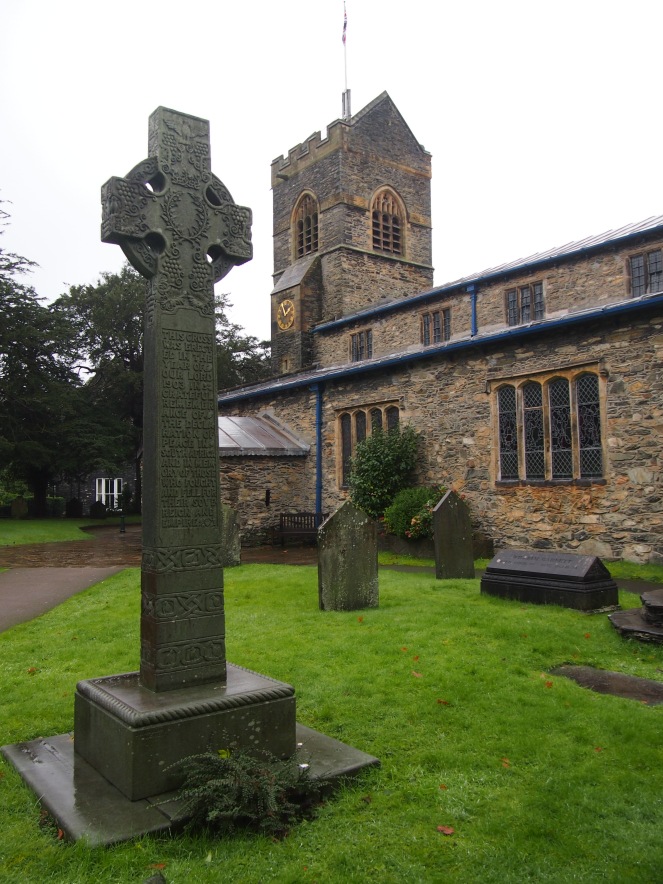
A number of well-preserved old memorials could be found in the churchyard, and one of the most eye-catching was that of a former enslaved person, “a native of Abyssinia”. Even in a peaceful burial ground in the Lake District, the spectre of the reprehensible trade in human beings looms.
St Martin’s isn’t the only site in the north west of England with a link to the slave trade. The most prominent site is that of Liverpool, the great port city, which was for many years the biggest slave port in Europe. The excellent International Museum of Slavery was opened in 2008 to educate visitors about Liverpool’s role in the transatlantic trade in enslaved people, as well as highlighting the appalling human cost of slavery. Other ports were also linked with the trade, such as Lancaster in Lancashire and Whitehaven on the Cumbrian coast. Lancaster’s brief period as a slave port is today marked by a memorial close to the old wharves and port buildings on the banks of the River Lune. Perhaps most poignant of all is the lonely grave of “Sambo”, an African boy who died at Sunderland Point in north Lancashire. Sambo had been a servant on board a ship that came to Sunderland Point from the West Indies in 1736, and whilst there he died of a fever and was buried on unconsecrated ground as he had not been baptised. In the late 18th Century, his grave was marked by a plaque which remains there today and many visitors to Sambo’s grave still leave flowers, stones and other trinkets.
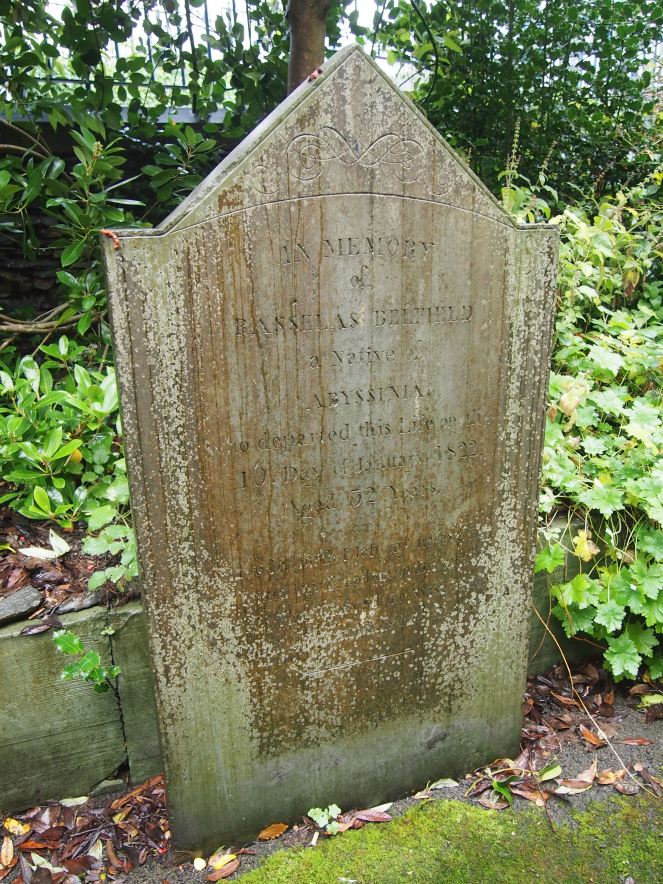
But who was Rasselas Belfield, and how did he come to be living in Windermere?
Major Taylor, whose family lived in a fine house on the shores of Windermere, had been serving with the army in India and had ‘acquired’ a black boy, who he apparently bought from the child’s mother for around £5 (in the money of the time). Exactly what prompted Major Taylor to buy this child is unclear, and we can only speculate as to his motivation. Perhaps, travelling home through Abyssinia, he’d seen the boy living in poverty, and took pity on him – wishing to bring him back to England for a better life. Perhaps, less romantically, the child was offered to him, or was “for sale” at a slave market. It is even possible that he had acquired the boy whilst serving in India, as Abyssinian people were often sold there as slaves. It’s impossible to tell. Whatever the circumstances of his purchase, the boy accompanied Major Taylor back to England and spent the rest of his life with the Taylor family. Did this boy have any choice over what happened to him? Even if Major Taylor’s intentions were altruistic, the manner in which this child was acquired is unsettling and in many ways not dissimilar to the way so many Africans were forcibly removed from their homes and lives by slave traders.
It’s hard to imagine what this young boy felt as he travelled with his guardian to England in 1803, and to the damp, foggy shores of Windermere. He was probably afraid, and although his long journey to Windermere would have been uncomfortable, one can only hope that it would have been a far cry from the appalling conditions that those souls shipped as enslaved people across the Atlantic would have endured.
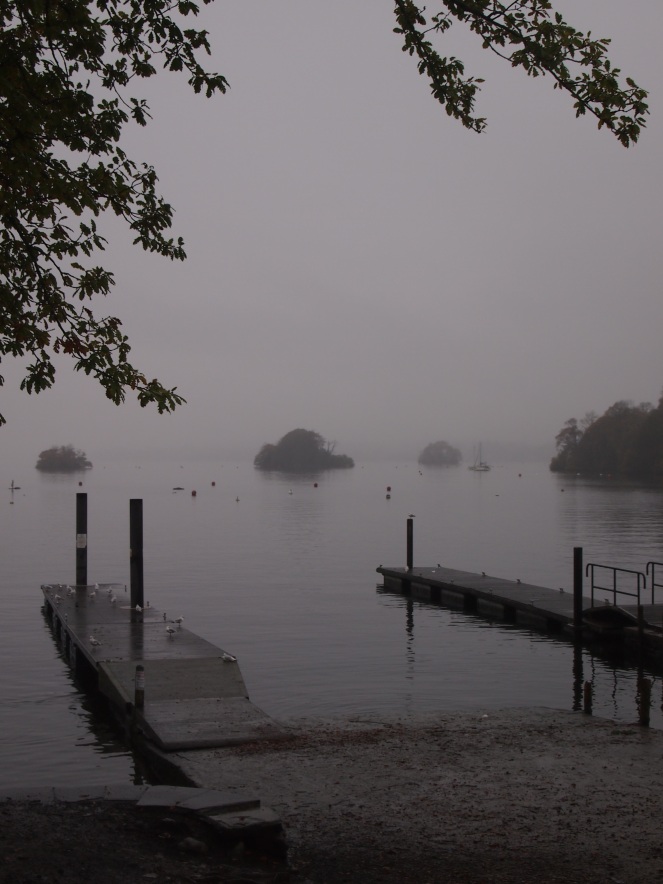
The child was named Rasselas Belfield – his surname after the Taylor family’s home, and his first name after the protagonist of a famous book by Samuel Johnson, The History of Rasselas, Prince of Abissinia. There is no record of what this boy’s name was before he met Major Taylor. Abyssinia, now known as Ethiopia, had long captured British imaginations as the epitome of all things exotic. It was this vogue for the exotic – plus his work translating Jeronimo Lobo’s A Voyage to Abysinnia – that inspired Johnson’s setting for Rasselas, and the titular hero was named after a real life Abyssinian prince, Rasselach. In the book, Rasselas escapes captivity and travels to Egypt with his companions in search of a happier life. Published in 1759, this book was still influential and widely read during the nineteenth century and references to it are made in many famous works, including Jane Eyre and Middlemarch.
Interestingly, there is evidence of another former slave named Rasselas living in England – a Rasselas Morjan, who died in Leicestershire and, like our Rasselas in Windermere, was commemorated by an impressive gravestone. As Thomas Keymer states in an article for the Times Literary Supplement, Rasselas was seen as one of the few positive African characters in literature and the character’s escape from captivity into freedom would have undoubtedly influenced those choosing a name for a former enslaved person. Samuel Johnson had also been a vocal opponent of slavery, which was another reason why some formerly-enslaved people may have been named after Rasselas. Johnson had a black servant called Francis Barber, who had been enslaved but had been granted his freedom in the terms of his plantation-owning master’s will, and who came to work for Johnson after a spell in the Navy. Johnson did not like to be waited on and saw Barber as a companion and friend, rather than a servant. Johnson named Barber as his heir, bequeathing him an income of £70 per year (which disgusted some of Johnson’s enemies, who were shocked by him favouring a black man), as well as entrusting his papers and books to him.
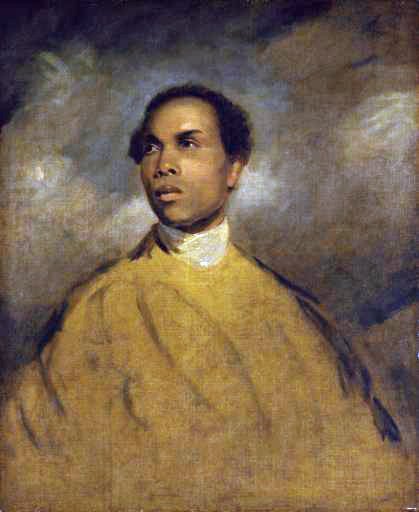
The presence of a black servant in a wealthy household in the 17th and 18th Centuries was something of a status symbol. Plantation owners returning home from the Americas would bring their black domestic staff with them, and this sparked a vogue amongst the rich of having black servants. It’s unclear how many of these domestic staff were paid, or were effectively enslaved. Some of these individuals appear to have been treated as little more than pets or curiosities, there to be shown off to visitors and not regarded as a human being in their own right. Chillingly to our modern eyes, newspapers carried adverts of black servants to be “sold” and, more commonly, had notices looking for escaped black servants or slaves and offering a reward for their return. Many of these people who left their masters whilst in Britain gravitated towards black communities in cities such as Bristol, Liverpool and London. In major ports it would not have been uncommon to see non-white people, and Africans worked as sailors, dock workers, musicians and businessmen as well as servants.

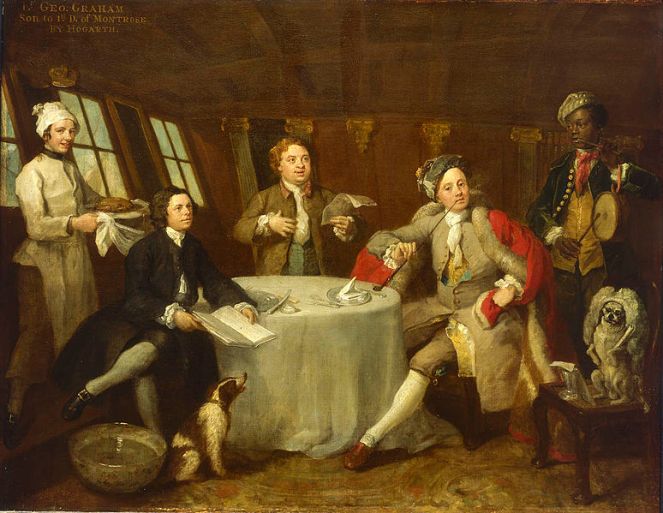
Opposition to slavery was growing in the late 18th Century. A court case in 1772, known as Somersett’s Case, concerned a man called James Somerset whose Boston-based owner wished to forcibly deport him back to Jamaica, where he was to be sold as a plantation slave. The judge, however, ruled that slavery was not recognised by law in England and that James was free to stay. There was a growing abolitionist movement, the most famous member of which was William Wilberforce. William Wilberforce was a committed anti-slavery activist and campaigned for many years to see slavery abolished. He had been inspired by Thomas Clarkson’s Essay on the Slavery and Commerce of the Human Species, Particularly the African, which highlighted the brutality and horror of the slave trade. Working alongside many others, including many formerly-enslaved people, Wilberforce’s campaigning helped to turn public opinion against slavery, and eventually Parliament followed suit, with a full ban on slavery only being passed shortly before Wilberforce’s death in 1833.
There is a tantalising link between the Taylor family and William Wilberforce. In the 1780s, Wilberforce had rented property in Bowness from Major Taylor’s mother, Isabella. Is it possible that their link with Wilberforce helped to shape their own views on slavery?
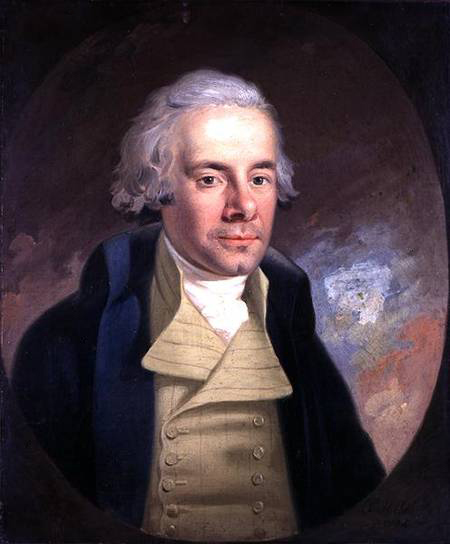
Ironically, the Taylor family had previously owned a plantation and slaves in South Carolina – this was the source of the family’s wealth. Peter Taylor (father of Major Taylor) was a merchant from Whitehaven and did not live on the plantation, but instead entrusted the management of both plantation and the enslaved people who worked there to an overseer. He sold the plantation and its enslaved workers after the American War of Independence, and after Peter’s death in 1789, his widow and children moved to Windermere.
By the time that Rasselas came to Windermere in 1803, public opinion was shifting in favour of abolishing slavery, and indeed in 1807 the Abolition of the Slave Trade Act came into force in the British Empire. It would appear that Rasselas’ place in the Taylor household was that of valet to Major Taylor. However, the quality and sentimentality of his gravestone suggests that Rasselas was not just a mere servant but a loved and valued part of the family. The epitaph on his grave stone includes a stirring verse, written as though from Rasselas’ point of view but its actual author unknown:
A slave by birth I left my native Land
And found my Freedom on
Britannia’s Strand; Blest Isle! thou
Glory of the Wise and Free Thy touch
alone unbounds the chains of slavery
Rasselas’ grave was made Grade II listed in 2008 to mark International Slavery Day. A number of other buildings and monuments related to the slave trade were also listed at the same time, as part of a drive to raise awareness of the slave trade’s legacy in Britain.
Although we can never know the true motivation behind Major Taylor’s decision to bring this young boy to join his family, the way that the Taylor family chose to commemorate Rasselas after his death shows that he was important to them. Who knows how many other Africans lie in old, unmarked graves in burial grounds across Britain? That Rasselas’ grave is so unusual shows how out of the ordinary his situation was, but we have no record of how Rasselas himself actually felt about his life in England and the family who he lived with. As happens so often in the historical records, the only view of this black man that survives is that of the white family with whom he was brought to live. Although Rasselas’ grave paints us a picture of a man held in great affection by the white family he lived with, like so many other black individuals his own words and feelings are lost to history. We don’t even know the name he had before the Taylor family named him Rasselas.
This grave raises many questions and challenges for the modern visitor to St Martin’s churchyard – while the epitaph is romantic and uplifting, it also raises many uncomfortable questions about why Major Taylor brought this child to Windermere in the first place, and how much freedom Rasellas really had as a servant of the Taylors. Although Rasellas’ own words and feelings have not been preserved in the historical record, his grave invites us to reflect on the legacy of slavery and colonialism and gives us a rare and brief glimpse into the life of a black person living in the Lake District in the 19th Century.

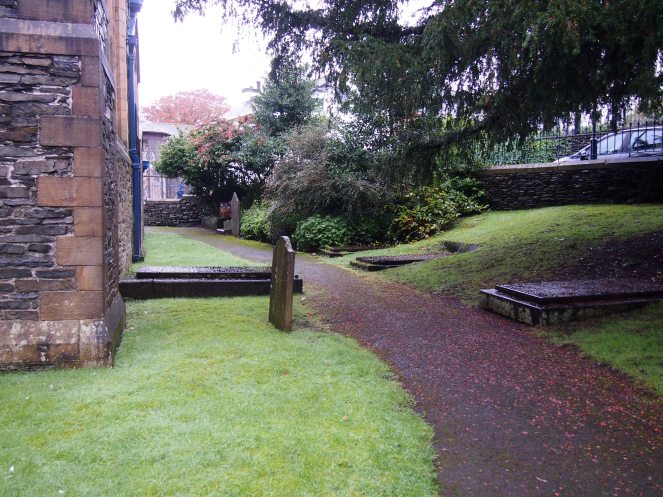
References and further reading
Tomb of Rasselas Belfield in St Martin’s Churchyard, Windermere, British Listed Buildings http://www.britishlistedbuildings.co.uk/en-504662-tomb-of-rasselas-belfield-in-st-martin-s
Black Servants in Britain, Dr Emma Poulter, Revealing Histories http://revealinghistories.org.uk/what-evidence-is-there-of-a-black-presence-in-britain-and-north-west-england/articles/black-servants-in-britain.html
Samuel Johnson’s message to America, Thomas Keymer, Times Literary Supplement, 25th March 2009 http://archive.today/00pK0
Black lives in England, English Heritage https://www.english-heritage.org.uk/discover/people-and-places/the-slave-trade-and-abolition/sites-of-memory/black-lives-in-england/
New Abolition Heritage Listings To Mark International Slavery Day 2008, Untold London, 21st August 2008 http://untoldlondon.org.uk/blog/read/new_abolition_heritage_listings_to_mark_international_slavery_day_2008
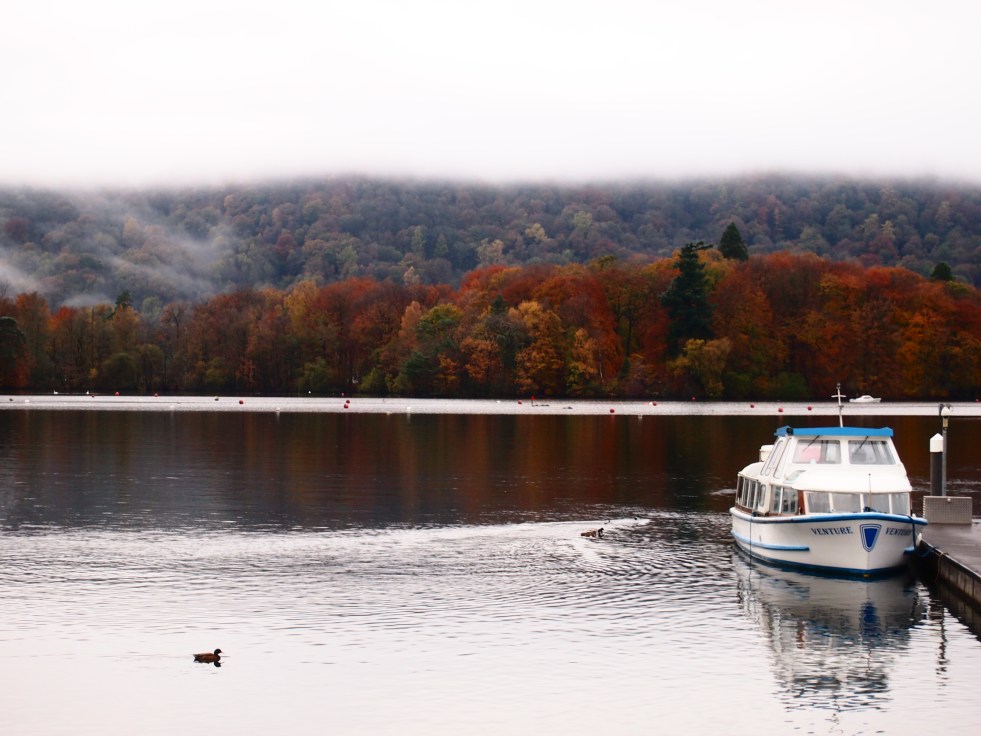

Particularly excellent post, this, since it’s outside the typical scope of Things About Gravestones 🙂
I’ve often thought having read a fair bit about Doctor Johnson over the years, that there’s surely a classy period drama in imagining the private life of the Great Cham and his amanuensis (can’t you just imagine ‘…and the award for Best Screenplay goes to ____ for “Sam and Francis”…’?).
LikeLike
Thank you! As much as I enjoy looking at the gravestones themselves (imagery etc), I love it when a gravestone leads to a whole other story 🙂
Dr Johnson had such a fascinating life, and it’s amazing how often he pops up in completely different situations – I could see the story of him and Francis making an excellent period drama!
LikeLike
A really good post indeed, I guess there a few similar graves around the country, but most will have been lost or the original graves unmarked. Did you know the grave was there, or was it one of those by chance ‘finds’? I keep meaning to do a post about a memorial in Greenwich Park to Ignatius Sancho was born on a slave ship in the early C18 – his mother died in labour and his father committed suicide rather than spend the rest of his life in slavery and his was sort of adopted by one of the wealthy families in the area.
LikeLike
Thank you! I came across Rasselas’ grave entirely by accident – it’s always a great feeling to stumble on to something fascinating. I wasn’t aware of Ignatius Sancho’s memorial in Greenwich Park. Sounds like he had an appallingly sad start in life but I hope he found happiness in London.
LikeLike
Hello – I really liked this post. You might already know about this, but there’s an excellent paper by Alan Rice in Ian Robertson’s edited collection ‘Heritage from Below’ which has an interesting section on Sambo’s grave, in north Lancs.
LikeLike
Thank you! I came across something written by Alan when I was researching this post but can’t remember what it was about. I’d like to visit Sambo’s grave one day so I’ll keep an eye out for the article!
LikeLike
I found this article of great interest being married into the Taylor Family myself and being a native of Windermere myself. I am researching Bishop Richard Watson who is also laid to rest here, in the same vicinity . Richard Watson who built Calgarth Hall. My mothers maiden name is Watson and her Ancestors are in St Anthony’s Cartmel Fell. I have mixed race Sons, myself, so found this very emotional. I am writing a book and will pose this question. Is it possible that Rasselas was the natural son of Peter Taylor?
LikeLike
It certainly wasn’t unheard of for female slaves to bear the children of their masters, so it’s not entirely implausible that Rasselas was Peter’s natural son. He certainly seems to have been well-regarded by the Taylor family and much mourned when he passed away.
LikeLike
Reblogged this on texthistory.
LikeLike